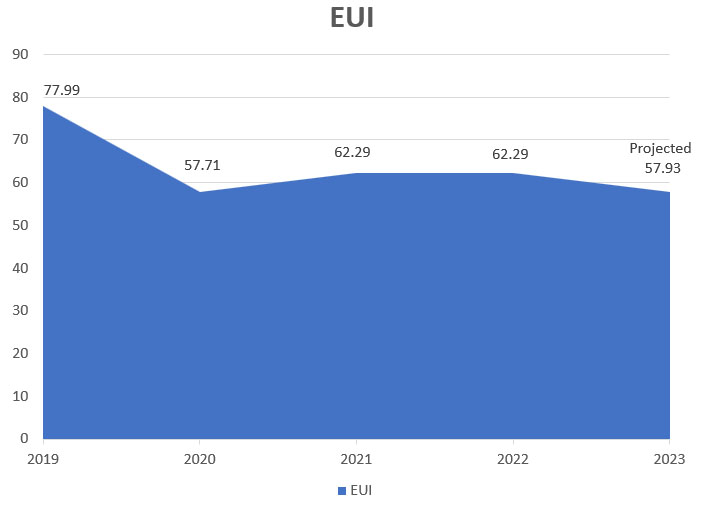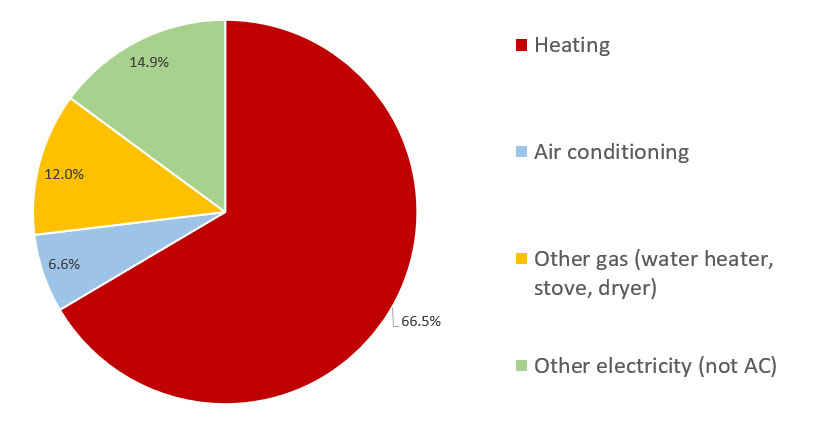In a previous post, I encouraged Thom Mayne and Blythe Alison-Mayne to release the EUI data for their house, since they have published the project and are touting its environmental responsibility.
In the interest of full disclosure, here are the EUI and site energy usage breakdown (approximate) for my house, a 1900 “farmhouse Victorian” located in central lower peninsula Michigan.


My wife and I bought our house in 2018. In 2020, in the midst of the COVID-19 pandemic, we renovated the attic (which modestly improved the house’s thermal envelope) and added a PV array. This, combined with our younger son moving out, led to a 18-20 point reduction of our EUI.
In an age when environmental stewardship suggests we should move away from natural gas, our house uses natural gas for as many functions as possible: heat, water heating, clothes drying, and the stove. I am hoping to electrify more of our systems—but the gas stove could only be removed by prying it from my wife’s cold, dead hands.
We are in a cold, grey, snowy climate, so heat is problematic. Given that our utility electricity is still largely fossil fuel based, using on-site gas for heat probably results in less CO2 emissions, but I have not calculated that.